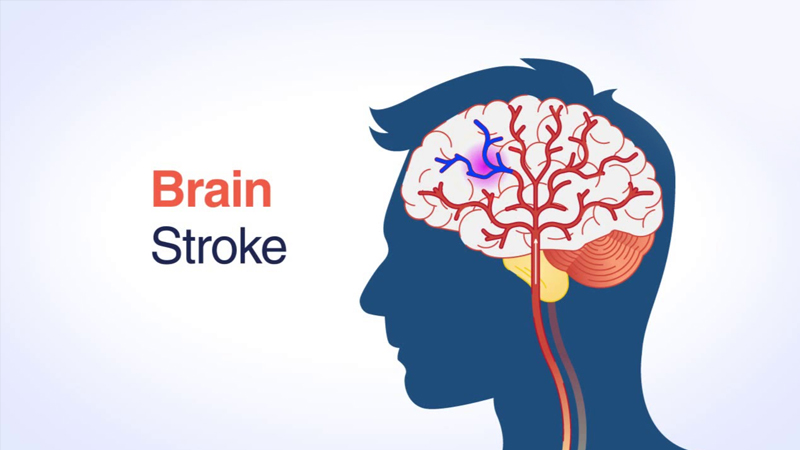Worldwide, it is said that Stroke is one of the leading causes disabilities. It contributes to about one fifth-of causes leading to death. Knowing stroke symptoms and getting immediate medical attention are key to saving brain function. About 2 million nerve cells are lost every minute if strokes go untreated.
Medical science has been evolving tremendously in the last few decades. Improved stroke treatment protocols have declined the death rate from stroke comparatively than 20 years ago.
However, still there is a major hurdle, as people are ill-educated about recognizing symptoms and understanding that strokes are medical emergencies.
In India, all medical establishments have been creating a larger awareness on this topic, as a result awareness of stroke symptoms is improving.
BE FAST is an acronym for STROKE AWARENESS and has been a big part of that success
What is BE FAST for stroke symptoms?
By learning and sharing the BE F.A.S.T. warning signs, you just might save a life from stroke. The acronym BE FAST is a handy technique to help you quickly recognize common signs of a stroke.
This defines questions to ask about the tell-tale signs your friend or loved one may be having a stroke, plus action to take:
Balance – Is there a sudden loss of balance or coordination?
Eyes – Is there sudden blurred or double vision or sudden, persistent vision trouble?
Face – Ask the person to smile. Is one or both sides of the face drooping?
Arms – Ask the person to raise both arms. Does one side drift downward? Is there weakness or numbness on one side?
Speech – Does the person have slurred or garbled speech? Can he/she repeat simple phrases?
Time – Call 108 for immediate medical attention if you notice one or more of these signs. Also, take note of when symptoms began.
Other Stroke Symptoms
Watch for below sudden symptoms / signs:
- NUMBNESS or weakness of face, arm, or leg, especially on one side of the body
- CONFUSION, trouble speaking or understanding speech
- TROUBLE SEEING in one or both eyes
- TROUBLE WALKING, dizziness, loss of balance or coordination
- SEVERE HEADACHE with no known cause
TIME is crucial in cases of stroke. Why?
Time is crucial for the reason that the faster a person who’s suffered a stroke gets medical attention the greater the chance we can save a life and reverse the long-term effects of stroke.
There are two types of stroke, and time is vital to successful treatment in both cases.
- Ischemic strokes occur when blood supply is cut off to part of the brain. This type of stroke accounts for most of all strokes. The blocked blood flow in an ischemic stroke may be caused by a blood clot or by atherosclerosis, a disease which causes narrowing of the arteries over time.
- Haemorrhagic stroke is caused by sudden bleeding from a blood vessel inside the brain or in the spaces around the brain. Sudden bleeding may result from: Head injuries. Cerebral aneurysm.
What are silent strokes?
Not all strokes are visibly detectable. Some go unnoticed without any warning signs or symptoms. Silent strokes are undetected strokes. They occur when a blood vessel blockage in the brain causes cells to die.
It is more common in the elderly people. About one-fourth of people over age 80 have at least one such area of tissue death, known as a “silent infarct,” in the brain. The condition is more common with increasing age, and in people who smoke or have a history of vascular disease
As per estimate from experts, 10 silent strokes occur for every stroke with detectable symptoms. Despite being called “silent,” these infarcts have been linked to subtle problems in a person’s movement and mental processing. They also are linked to future risk for stroke and dementia.
Silent infarcts can be seen in patients through advanced brain imaging techniques such as MRI and CT
How can stroke be prevented?
Stroke prevention starts with a proper diet, plenty of exercise, and a healthy lifestyle. In few exceptions, medication may be an option to reduce stroke risk factors. It’s not too late to make lifestyle changes, starting now.
High blood pressure is the single greatest risk factor many people can control. It’s a good idea to monitor blood pressure regularly and work with your doctor to control it.
Other risk factors to control include:
- Diabetes
- High cholesterol
- Heart disease
- Abnormal heart rhythm (atrial fibrillation, or AFib)
What is the best treatment for stroke?
Ischaemic strokes can often be treated using injections of a medicine called alteplase, which dissolves blood clots and restores blood flow to the brain. This is the gold standard treatment for ischemic stroke. An injection of tPA is usually given through a vein in the arm within the first three hours.
Is stroke curable?
Yes, stroke can be cured — but it occurs in two stages. Both the stages are equally important and critical for recovery. Firstly, it is more to do medically. The doctors administer specific treatment to restore normal blood flow in the brain. Then, the patient participates in rehabilitation to cure the secondary effects
